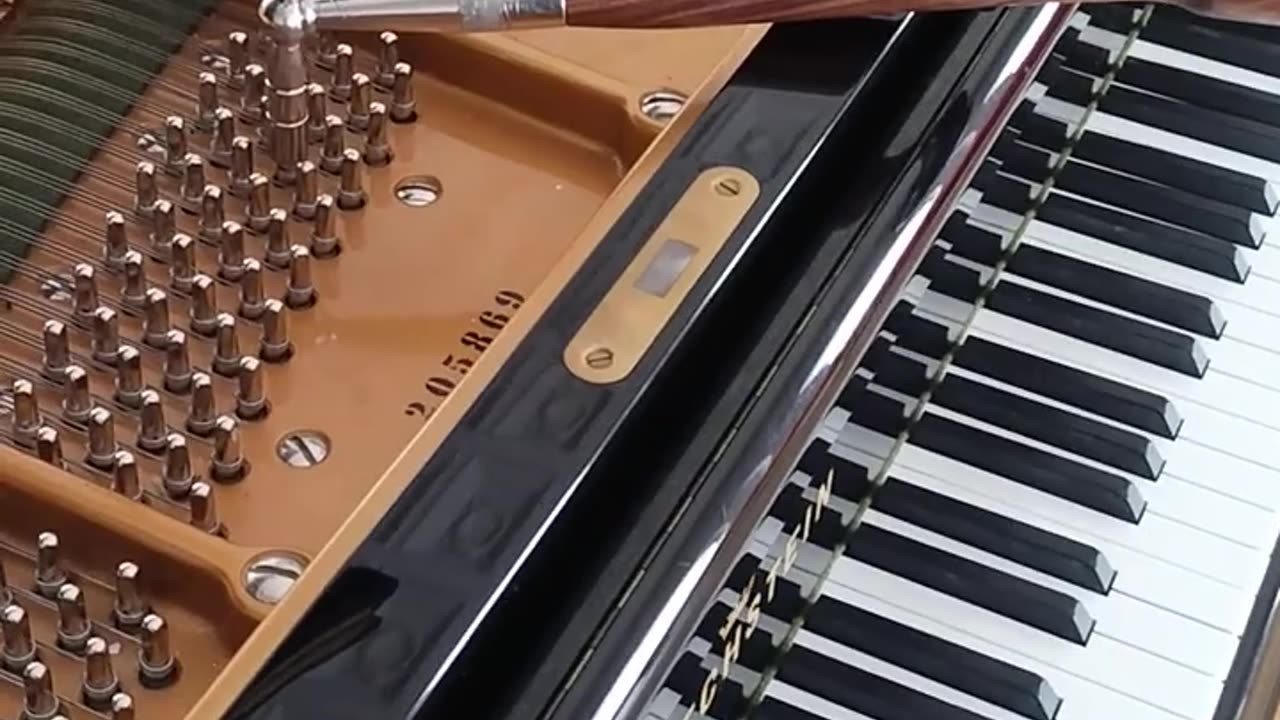Premium Only Content

the cause using (15-18) method no can do is the brand of the grand piano 'Bechshtain'.
The fact that we all MUST to test the pin according to your methodology there, then I say "yes-yes-yes!"
If I correct understand you, that position 18 is often preferred during the testing process as it allows for maximum control over the tuning pin and minimizes the possibility of damaging the wooden part of the hole. It partly compensates for the string's force there too.
When testing the tapered hole for evenness, it is crucial to test in all directions conically. Tilting the tuning pin from side-to-side may not provide accurate results as the tapered hole needs to be tested for evenness in all directions.
Choosing position 18 also helps the tuning technician to feel the tension of the string before making a turn. In contrast, position 12 may lead to higher string pressure due to the oval hole's walls, making it challenging to control any dent or damage to the wooden part of the hole.
Another benefit of using position 18 is that the tuning technician can feel (his palm) how the tuning pin behaves in that position, which minimizes the bending of the pin during rotation and enables greater stability and control. This added level of control is crucial for achieving optimal minimization to rotation of the pin there.
In conclusion, the usage of position 18 during the tuning process provides maximum control and stability, compensates for the string's force, and helps to minimize the possibility of damaging the wooden part of the hole. It is a recommended position for tuning technicians looking to achieve optimal quality and stability tuning there.
Best regards, Max
-
 5:12:47
5:12:47
EricJohnPizzaArtist
5 days agoAwesome Sauce PIZZA ART LIVE Ep. #56: Bret “The Hitman” Hart Tribute with SoundBoardLord!
37.3K7 -
 1:38:08
1:38:08
HELMETFIRE
3 hours ago🟢GAMING WITH FIRE EP4🟢RUMBLE TAKEOVER!🟢
18K -
 LIVE
LIVE
iCheapshot
4 hours agoCheap Plays Warzone Again? What!?
170 watching -
 2:30:14
2:30:14
PandaSub2000
6 hours agoCHAOS & FURY | Episode 27: Attack Of The Cranks (Edited Replay)
20.7K2 -

Spartan
3 hours agoSpartan - Pro Halo Player for OMiT | Ranked for a little bit
12.7K1 -
 15:15
15:15
Adam Does Movies
1 day ago $3.00 earnedHappy Gilmore 2 - Movie Review
25.9K18 -
 3:10:16
3:10:16
Toolman Tim
5 hours agoDOOM: The Dark Ages ALMOST DONE! | The Gaming Thinktank
10.7K1 -
 LIVE
LIVE
SkrimpNGritZ
4 hours agoSkrimpNGritz Off the Grid Live
56 watching -
 16:29
16:29
Mrgunsngear
1 day ago $0.72 earnedGirsan Witness 2311 Match X - Staccato XC On A Budget But Does It Work?
18.1K7 -
 14:54
14:54
Tundra Tactical
5 hours agoTundy's SIG MEME Review 2: The Reload!!!
15K6